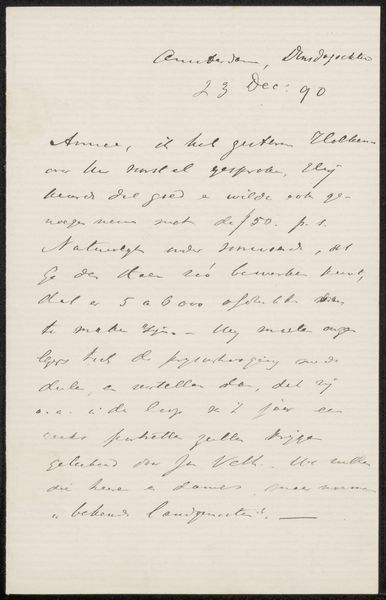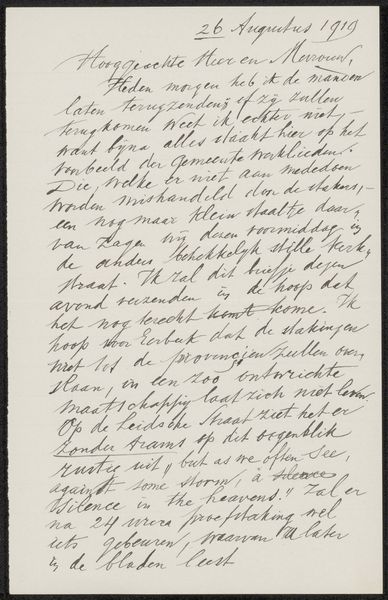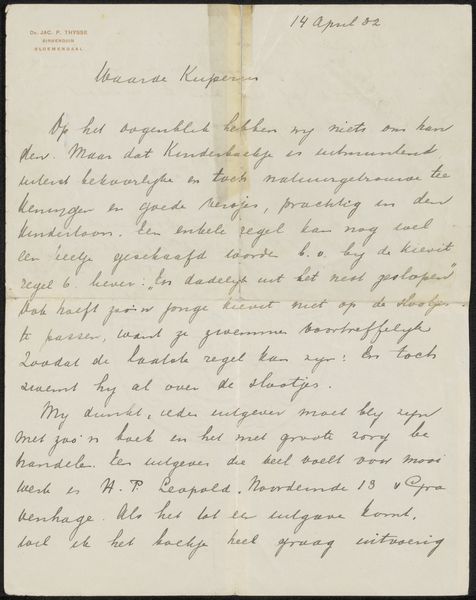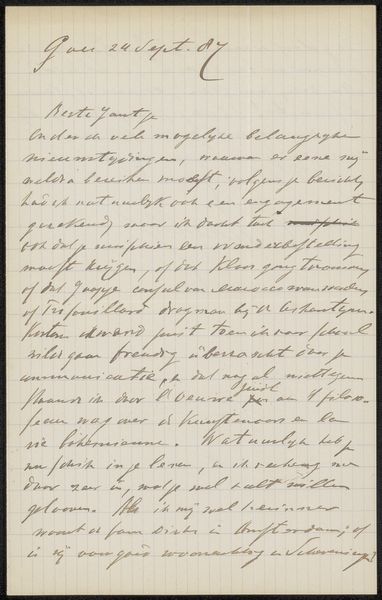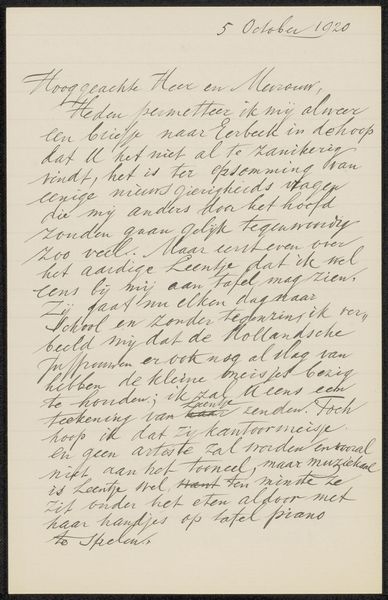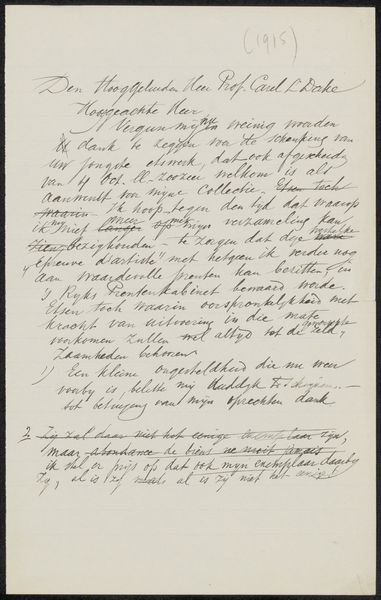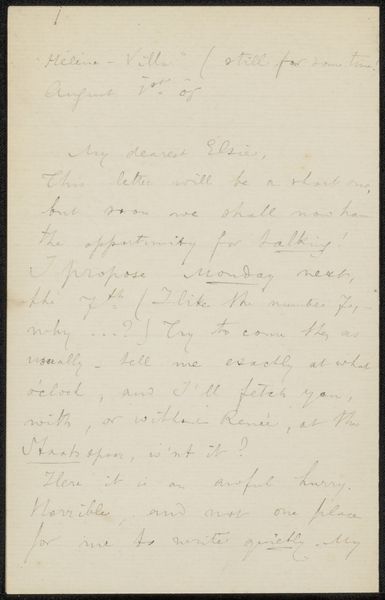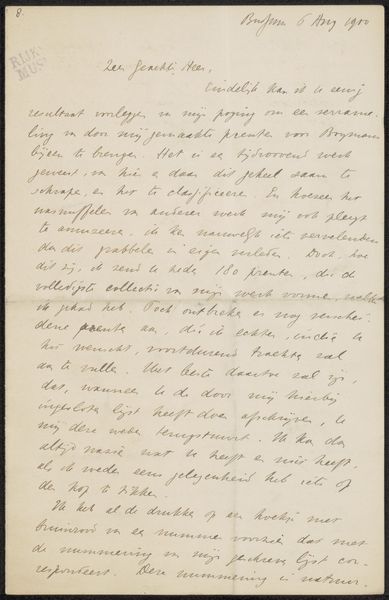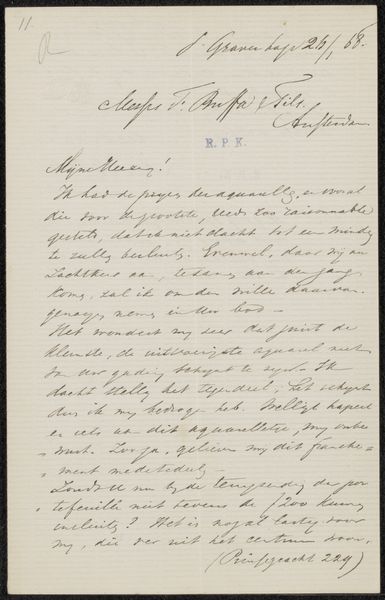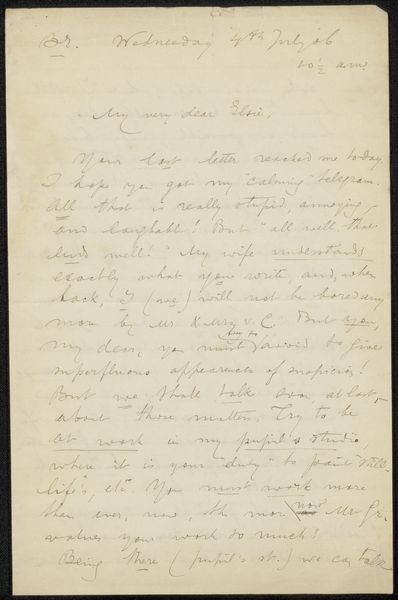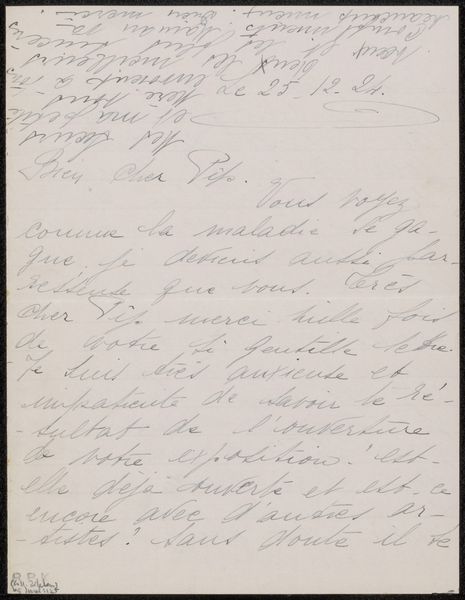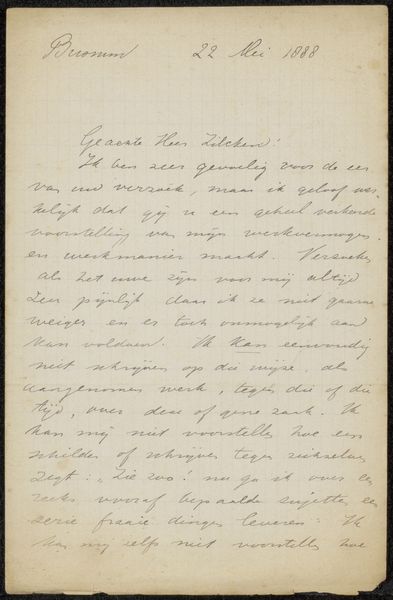
drawing, paper, ink
#
drawing
#
paper
#
ink
Copyright: Rijks Museum: Open Domain
Curator: So, here we have "Brief aan Jan Veth" by M.C. Lebret, crafted between 1874 and 1894. It's a drawing, rendered in ink on paper. Editor: It's such an intimate object, a letter. Seeing handwritten text always feels so immediate. The grayed paper gives it a certain aged mood too. It’s really delicate and seems ephemeral. Curator: What strikes me is the sheer labor involved in producing something like this. The making of ink, the sourcing of paper, the conscious decision to pen these thoughts. Even the choice to preserve such everyday communication speaks volumes about the relationship between artist and subject. Editor: Absolutely. Letters provide such tangible access into the networks of artists, critics and intellectuals who helped shape the cultural landscape of the era. Imagine Jan Veth receiving this; his reaction, his own position in relation to Lebret and the wider artistic debates of the day. It's a silent but potent form of political communication too. Curator: And what of the paper itself? Where was it produced? Was it hand-laid? The watermarks, if visible, could tell us a lot about trade routes and manufacturing processes. We’re considering more than just the image, but the whole industrial context in which it was made and delivered. Editor: Yes, and how that context impacts the way we view this document now. Was this meant to be preserved, or was it sheer chance that led to its archival preservation, making this seemingly simple, utilitarian artifact now worth showcasing in a museum setting? Curator: Precisely. Thinking about consumption, its accessibility then compared to the preciousness associated with its display today… These shifts in value are telling. Editor: I think, for me, seeing this letter really emphasizes that behind grand art movements, it’s the connections and exchanges that create true understanding, collaboration and innovation. Curator: And, for me, looking at that labor makes one consider, even further, just how our concept of art might change when we fully value every element of labor and production behind the most everyday objects.
Comments
No comments
Be the first to comment and join the conversation on the ultimate creative platform.
